Blog
Disposing of Concrete and Soil after Landscaping must be Done Right
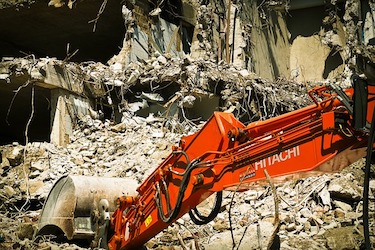 Waste disposal after landscaping is something that must be maintained as a high priority. The right way to dispose of materials such as concrete and soil is to do so in an environmentally friendly way.
Waste disposal after landscaping is something that must be maintained as a high priority. The right way to dispose of materials such as concrete and soil is to do so in an environmentally friendly way.
Though most of this waste will eventually find its way to the dump, the process of disposal is important to getting it there. If you’ve not planned where and how to dispose of concrete and soil, you may run into some trouble along the way.
Whenever you are planning a landscaping project, take into account the amount of waste output expected. Many inexperienced landscapers do not do this and in turn, end up with the inconvenience of not knowing what to do with their waste and/or seeing increased costs.
Read more: Disposing of Concrete and Soil after Landscaping must be Done Right
Banning Coffee Pods in Ontario a Reasonable Waste Solution?
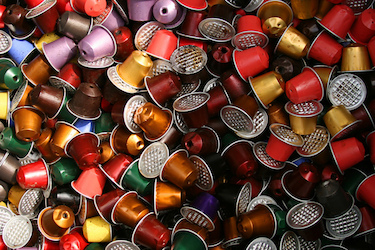 As Ontario looks to different methods in reducing its growing waste problem, some have come forward requesting a province-wide ban on coffee pods. To some, this might seem a little strange but to those who have tuned into the ongoing waste debates in Ontario the last few years knows that there’s at least some validity to the argument.
As Ontario looks to different methods in reducing its growing waste problem, some have come forward requesting a province-wide ban on coffee pods. To some, this might seem a little strange but to those who have tuned into the ongoing waste debates in Ontario the last few years knows that there’s at least some validity to the argument.
Ontario Progressive Conservative MPP Norm Miller is arguing for a law to require any single-use coffee pods sold in the province to be capable of being composted within four years after production. He argues that if this can be achieved, that would mean a big chunk out of the more than 1.5 billion coffee pods that end up in Canadian dumps every year.
Currently, the majority of coffee pods sold in Ontario cannot be recycled and are not compostable. That means they inevitably end up in landfills. They may appear small in consumer hands but imagine the impact that millions upon millions of these make every year.
Read more: Banning Coffee Pods in Ontario a Reasonable Waste Solution?
How to Choose the Right Dumpster Size for your Project
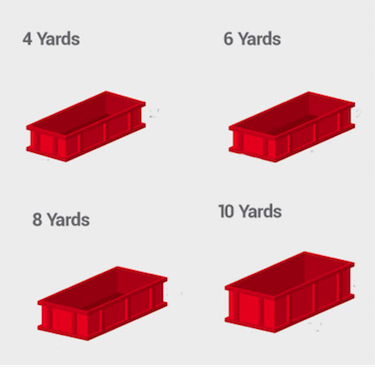 Residential constructions, household renovations, and seasonal cleanups may leave massive piles of garbage on the lawn or in the driveway. Depending on the size of the project, you may want to consider renting a dumpster. I mean, think about it. It’s not going to thrill your neighbours to see a mess outside nor is it going to add any curb appeal to the neighborhood. Now, imagine containing all that bulky and sharp waste materials in a dumpster. Needless to say, the second option seems a little more reasonable.
Residential constructions, household renovations, and seasonal cleanups may leave massive piles of garbage on the lawn or in the driveway. Depending on the size of the project, you may want to consider renting a dumpster. I mean, think about it. It’s not going to thrill your neighbours to see a mess outside nor is it going to add any curb appeal to the neighborhood. Now, imagine containing all that bulky and sharp waste materials in a dumpster. Needless to say, the second option seems a little more reasonable.
Now there’s no need to go renting a larger sized dumpster than you need. That’ll cost extra and you’ll get space you won’t use. Dumpsters tend to come in sizes ranging from 4 cubic yards to the massive 40 cubic yards. As a point of reference, a 10 cubic yard dumpster is equal to three trucks’ worth of debris. For any minor renovations, dirt cleanup, or concrete removal, this size should more than suit your needs.
For something a little bigger, there’s the 20 cubic yard container. This is among the most common rentals and can be seen on any sort of roofing removal or installation project, deck and floor removals, room remodelling, and/or landscaping. For something a little bigger than this even, there are options. Typically, it’s only recommended to go with the larger containers for bulky furniture removal, major construction, or sizeable demolition projects. For most residential homes, a mid-sized dumpster will be more than enough space for anything you need to do.
Read more: How to Choose the Right Dumpster Size for your Project
Here’s How to Dispose of your Household Hazardous Waste
 Households in Ontario produce more hazardous waste than we may think. Toxic chemicals and pharmaceutical-grade waste is not uncommon. Products such as cleaners, cosmetics, some medications and medicine, motor oil, and even some components of consumer electronics contain traces of waste that if left to make way into our everyday environment would turn it toxic.
Households in Ontario produce more hazardous waste than we may think. Toxic chemicals and pharmaceutical-grade waste is not uncommon. Products such as cleaners, cosmetics, some medications and medicine, motor oil, and even some components of consumer electronics contain traces of waste that if left to make way into our everyday environment would turn it toxic.
The most unfortunate thing is that products like these, among numerous others, have been making their way out to our waterways for decades. A study published by McGill University in 2015 revealed trace amounts of cocaine, oxycodone, and morphine found in southern Ontario’s water streams. Also, several other prescription drugs were found in the analysis that led to the report’s publication.
Even after going through purification at any of the province’s water treatment facilities, these things still end up sometimes in our water. The only option to guard against this pattern continuing is by knowing how to dispose of hazardous waste and to ensure that materials such as those mentioned don’t end up in our waterways.
Read more: Here’s How to Dispose of your Household Hazardous Waste
Turning Waste into Profit - The Latest Waste Management Trend

Turning waste into money is among the latest trends in waste management and is proving to be a highly successful business model for many companies. Think about how many millions of tonnes of waste that are created every day. As urbanization continues and population growth is an inevitability, the amount of waste we generate every day is only going to increase.
Fortunately, there are many companies who have made it their mission to turn waste collection into profit. For example, a company in the UK recently created a product that allows consumers to recharge their phones using their own urine. By targeting the micro-organisms that feed in urine and that produce electrons as a result of this feeding, they’ve uncovered a way to generate a sufficient amount of electricity to charge mobile devices.
To anyone seeking to build a business off waste, look to the cities. Urban regions account for as much as 75 percent of the consumption of natural resources, producing more than half of the world’s waste. Existing waste management systems, especially in low and mid-income regions, are particularly stressed or inefficient at managing the waste they have. So many entrepreneurs are entering these spaces and others, seeking new ways to make the most out of our garbage. Looking ahead, a sustainable future is going to be heavily dependent on these businesses, and the technological innovations that are and will continue to happen with regards to waste management.
Read more: Turning Waste into Profit - The Latest Waste Management Trend
3 Easy Ways to Avoid Property Damage with your Dumpster Rental
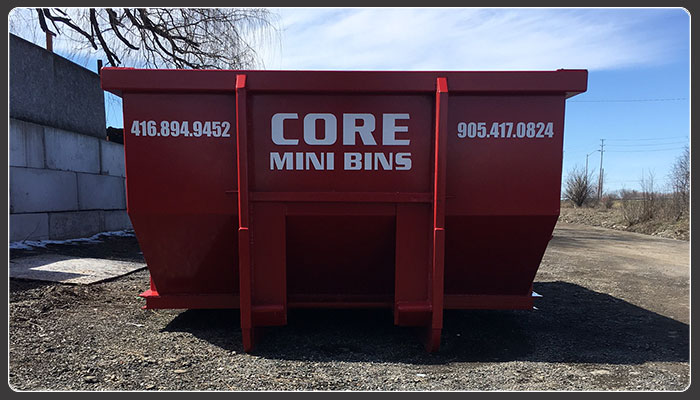
When you’re performing a major renovation or home clean-up and you’ve chosen to go with a dumpster rental, you may be wondering what the best way is to set it up.
There exists the potential for property damage with any dumpster rental so we wanted to be put together a few tips to help avoid it. By paying attention to these few things, you won’t need to worry about any damage or unexpected cost.
Find the Right Place to put it
You may not give second thought to where a dumpster will go on your property. Be careful though. Ideally, you want to find the most effective place for your dumpster rental that will help keep your project moving. Position it near to where you are cleaning up, and save yourself the effort of having to travel to and from it throughout your renovation or junk removal project. A flat, solid surface is always recommended.
Put some Protection underneath
There does exist the risk that because of the weight, it could damage or dent the surface on which the dumpster is placed. Always put something underneath the dumpster to withstand the weight. Anything from plywood to steel will work. It just needs to be able to handle the heaviness.
Also, if the dumpster has wheels, it makes it even more important to put some plywood underneath the wheels to ensure that the weight does not dent pavement or soil. It’s easier than you may think for dents to occur so be wary.
Read more: 3 Easy Ways to Avoid Property Damage with your Dumpster Rental
Protecting your House before you Begin Demolition

Knowing what to do to protect your home during a demolition is key to ensuring a successful project. Meticulous attention to detail should be paid to keeping a space protected throughout the demolition process. For homeowners looking to save some money on their demolition, more are choosing to do the demolition work themselves. Though dust and debris are unavoidable, learning how to manage your property through demolition is a must.
Let’s start with any flooring, in particular hardwood flooring. This stuff is expensive and required some protection. Ensure that all flooring is properly protected so that any debris does not get knocked around into carpets, sticking to tile, or scuffing wood. Be wary of heavy duty tape which can mess up a floor’s finish. Buy delicate-surface tape and set this up around the perimeter of the room. This tape is easy on hardwood flooring finishes and on top of it, heavy duty tape can be used no problem. For stair treads, something with a non-slip surface will be needed to hold any heavy duty paper in place.
Next is finding ways to confine dust to the demolition area. Temporary dust walls made of plastic sheeting can easily be installed with telescoping poles and perimeter tape. Applying this over doors and windows should prevent dust from moving from work areas to other parts of the home.
Read more: Protecting your House before you Begin Demolition
Can the University of Ottawa go to Zero-Waste – Reusing and Reducing to Make Change

Apathy is climate change’s biggest enemy. When people don’t believe they can make change, they do nothing. The University of Ottawa has recently challenged itself to do away with the apathy and to make change by following a reduce-reuse-recycle model.
This is in line with the province of Ontario’s Bill 151, also known as the Waste-Free Ontario Act. The bill alongside some other provincial alternatives are aiming at creating a ‘circular economy’, where waste is reused in the form of other goods, services, and/or processes. In a way, it’s making treasure out of trash.
For the University of Ottawa, admittedly, a zero-waste target seems tough. Currently, the university only has a waste diversion rate of 64.5 percent in comparison.
According to its campus sustainability office, the university has identified two areas where improvements can be made on its existing system. Firstly, its recycling program can arguably be simplified. Secondly, composting on a larger scale is something that can be further developed and simplified.
In addition, the biggest barrier to meeting the zero-waste target is actually believed to be students failing to recycle properly on campus. As it is source-separated, this counts on the student throwing out a piece of waste to know the correct bin to deposit in.
Read more: Can the University of Ottawa go to Zero-Waste – Reusing and Reducing to Make Change
What you Need to Know about Winter Composting

Composting in the winter is tough for people who may not know how to compost under harsh, snowy, and/or freezing conditions. To some, it may seem impossible.
There’s more than a few reasons to keep one’s compost bin active during the winter months. For example, if you are in a household that puts out a lot of waste, a winter composting bin can help reduce what has to go to the curb.
Winter composting can make for a fun challenge for the winter, especially if it’s for a household with kids. It makes for a great conversation piece. Depending on the way it is used, it could also be a source of supplemental heat for a winter greenhouse.
Also, you won’t need to worry about it drying out or overheating, a common worry during the summer months.
The Basics to what you need to Compost in Winter
First off, you need a heat source to ensure your system stays active. Keeping the compost warm and active requires an external heat source. Secondly, you will absolutely need to insulate your compost in some way. For an easy, cheap way to do this, using straw bales around your bin can do this. Thirdly, you will need to ensure that it is provided consistent fuel throughout the winter months. Many families keep a bucket or container of some kind in the kitchen to put scraps in.
Canada has left Thousands of Tons of Canadian Garbage rotting in the Philippines

A recent visit to the Philippines by Justin Trudeau was fraught with controversy. Filipino activists have been challenging Trudeau to remove the thousands of tons of Canadian trash that is sitting in Manila’s port. The numerous shipping containers that have been sitting there are assumed to include old wire, CDs, used plastic cups and soiled adult diapers, among other garbage.
This sitting, rotting Canadian trash is hardly a new occurrence. The containers have been stationed in the Philippines for 4 years now. Trudeau committed to a “Canadian solution” roughly two years ago however nothing has seemingly come of this.
In the meantime, more than 100 waste containers crammed with rotting trash has left a lingering stench. Across the Philippines, it’s made headlines, and has been identified as an environmental and public health risk for the country. Filipino activists and officials have been urging Canada to repatriate this waste.
In case you’re wondering how Canadian landfill garbage came to end up in the Philippines. The shipping containers were allowed into the Philippines disguised as recyclable plastics. As custom officials were conducting their routine inspections, officials found stinking garbage and landfill waste. Customs designated the material as potentially hazardous and impounded the shipments.
Trudeau’s trip to the Philippines was meant to highlight the strong Canada-Philippines relationship. Despite two years passing since Trudeau’s initial comment, it’s evident that Canada-Philippines environmental concerns may not be a priority for the federal government.
Read more: Canada has left Thousands of Tons of Canadian Garbage rotting in the Philippines
Will Standardized Garbage Containers help with Waste Diversion – a Discussion
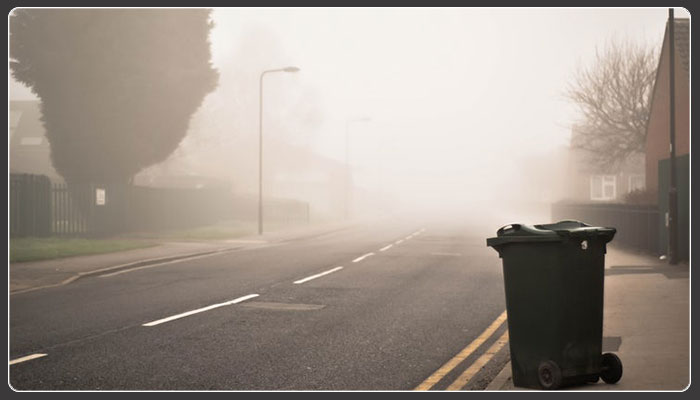
To reduce the amount of food waste that ends up in its landfills, the County of Simcoe is seeking to use standardized garbage containers.
At a recent community-of-the-whole meeting, Simcoe’s council expressed interest in conducting a standardized garbage container pilot program. The council’s arguments for this is that it would increase waste diversion.
The county already has a waste management bylaw however many residents choose not to stick to it. According to the bylaw, the limits for garbage containers are identified to a maximum weight of 20 kilograms and a maximum volume of 80 litres.
Contrary to these limits, many residents use up to 120-litre garbage containers. The 120-litre containers tend to make it difficult to determine whether volume limits are being adhered to. It has been estimated that as many as one third of residents are exceeding the weekly limits.
To guard against this in the future, the county has argued for a standardized 80-litre disposal container for the community. Accomplishing this would mean increased waste diversion. It’s believed a smaller bin would mean more use of the county’s green bins which are designated for food waste. Currently, only roughly 40 percent of the food that should be in the green bin ends up in the green bin. The other 60 percent is being put into these 120-litre bins which means more is sent to landfills than what is needed.
Read more: Will Standardized Garbage Containers help with Waste Diversion – a Discussion
9 Things to keep in mind when Hiring a Demolition Contractor

If you’ve never hired a demolition contractor before, we’ve put together a quick list of tips to read through before making any final decisions on who to hire. There’s a lot at risk when it comes to any home remodeling project. Always ensure you’re hiring a demolition contractor you can trust and that’s going to do what needs to be done to have the process move along smoothly. By following this list of things to keep in mind, rest easy knowing that the contractor you do hire will be the right one for the job.
Find a Demolition Contractor specific to your Job
Choose a demolition contractor who specializes in what you need done. Find out what their experience level is for jobs such as yours and don’t hesitate to continue calling up contractors until you find one that suits the job.
Be Specific in your Requests
When requesting a quote from a demolition company , be as specific as possible about what you need done. If you have pictures of the area that needs work, don’t hesitate to provide them.
Make sure you’re Home while They Work
As a homeowner, you need to be there while they work. Though some demolition contractors may not request the homeowners to be present, it’s encouraged for you to be there. Due to the sensitive nature of demolition, in the moment, you can ask questions and express concerns, should any occur.
Read more: 9 Things to keep in mind when Hiring a Demolition Contractor
7 Ways to Improve Waste Management at Home

Trash day is typically the only time we really give some thought to our trash cans. After all, it’s just a container we put our waste into and off it goes once a week. Despite the seeming insignificance of a trash can, it can get gross, develop issues, and requires cleaning. Here are the top 7 ways to improve your trash can instantly.
Recycle
Recycling can help cut into how much goes into your waste bin, sometimes in a pretty big way. Create a separate recycling bin for items that your community accepts as recycling. If there is no direct pick-up, you may be able to drop off your recyclables at different places across the city.
Reduce Food Waste
Rotten food in the trash leads to spills, messes, and stains. By setting up a garbage disposal or a compost pile in your yard, you can cut down on the food that goes into your trash. Any items that do need to be trashed, do your best to make sure they are bagged properly.
Buckle down on Odors
Trash can odor is among the most common issues with trash cans. There are a range of things you can do to take care of this odor including sprinkling baking soda, kitty litter, or using dryer sheets. Each of these items take care of foul smells and there are other products that will do the same thing as well.
5 Ways to Reduce Waste during a Renovation

Renovations produce a significant amount of waste, creating additional expenses for the homeowner and sometimes difficulties in removal. By planning ahead, save money and reduce the waste output on any major home renovation.
Finding a Way to Reuse Materials
Repurposing old construction materials is highly sought after by some, for use in creating beams, rustic or unique furniture, shelving, and other purposes around the home. Let’s say you have an old door or window. Before you dump it, think of how it can be repurposed. There might be a way to hang onto it and make something really cool out of it.
Instead of Tearing it out, choose an Update Instead
Renovation is not only about tearing out the old and replacing it with the new. If there’s something solid in your home but its aesthetic is a little dated, there’s always ways to revamp it a little bit. Be it kitchen cupboards, a unique feature in the home, or something else, fresh paint, a little trimming, and/or new additions to existing shapes can make a lot of difference.
Donate it
Contacting an organization like Habitat for Humanity, they may be willing to take off your hands different construction and renovation items. Providing them to an organization like this and allowing them to sell it for profit can put a lot of good karma out there.
6 Tips on How to Compost and Avoid Flies, Odors, and More!
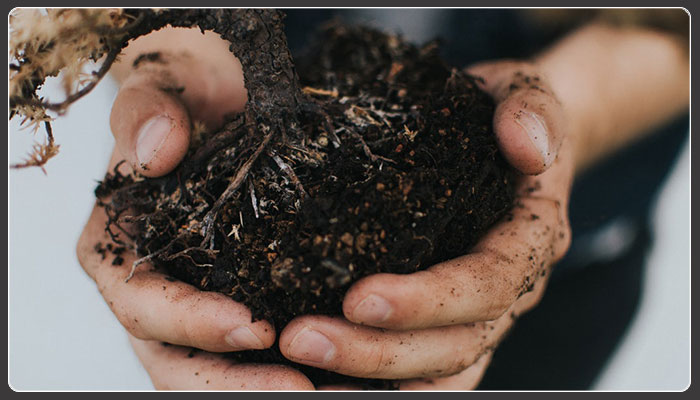
Dividing up compostable waste from garbage should be a process that every Canadian goes through. That said, composting can be complicated when you’re getting foul smells and fruit flies coming around.
As cities such as Montreal expand curbside compost pick-up across hundreds of thousands of households, it’s becoming more important to know what you’re doing when it comes to composing. For example, yes, meat and seafood are considered compostable materials and including these materials, there can present issues. Here are some tips on how to avoid these issues, which will keep your property compost-friendly and clean.
Always use Newspaper
Lining the bottom of your container with a single layer of newspaper will help absorb moisture. Never put liquids inside your compost container. This is designed specifically to address the moisture of other non-liquid materials.
The Power of Wine Corks
Cut a wine cork in half. Believe it or not, by placing this on top of your bin and/or around the outside of the container, it will reduce the amount of fruit flies that come around.
Read more: 6 Tips on How to Compost and Avoid Flies, Odors, and More!
How to Rent a Dumpster for Waste Management
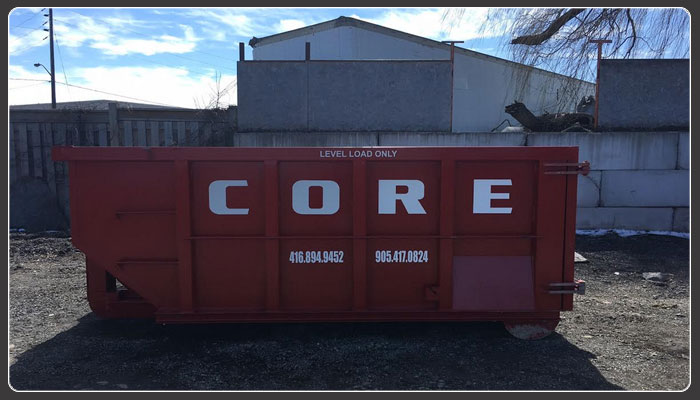
Renting a dumpster for waste management can be challenging, depending on where you are in the province. Different dumpster rental companies operate differently and thereby charge differently. For clients renting, in some parts of the province, you have limited options. For those that have at least a few companies to choose from, requesting a quote is where to start. Naturally. Remember, though, some companies choose a rate to rent a dumpster and then have weight limitations under said rate. When you exceed the weight, it can be costly to cover. There may additional fuel surcharges to consider. These are all things to weigh prior to giving over credit card information.
The dumpster rental industry can be tough to navigate for the reasons mentioned. It’s not always obvious what you’re paying for and where fees could increase. In some cases, getting a quote may only provide a minimum of what you can expect to pay. Beyond getting an initial quote, speaking with a representative at your dumpster rental company is next. They should be able to provide an answer to all the questions mentioned here. Ideally, you want to find out what your maximum cost is, should you go over the minimums they have established.
Dumpster rentals are helpful in a number of situations, including on industrial sites and with renovations. Instead of using your typical garbage and inevitably running out of space for waste, hiring a rental dumpster will increase your space for waste significantly. This can help keep a space clean and keep all garbage confined to a dumpster.
20 Basic Demolition Tips for your DIY Artist

Doing demolition work yourself is a great way to not only relieve stress but to save you a heck of a lot of money. Before you tear out a wall, swing a hammer, or start breaking things, here’s some basic tips to keep in mind.
#1 – Cover up any air ducts to prevent construction dust from being sucked in. Dust like this can easily plug your furnace filter.
#2 – Bolt cutters are the ideal tool to snip through pieces of wire mesh.
#3 – Rent a floor scraper (walk-behind type). For less than $75 per day, save yourself time as well as a sore back and/or wrists. These can help bust up ceramic tile, remove vinyl sheet, tile floors, and more.
#4 – Cut wall studs quickly and remember, once you get close to the plywood, don’t apply as much pressure.
#5 – Circular saws work well on cutting up tin, doors made out of steel, roofing, cement, rebar, and fiber cement.
#6 – Don’t forget to pull out the drywall screws. When yanking out the drywall, sometimes the screws remain embedded in the studs. To get them out, opt for a pry bar or hammer claw, just like how you would pull out a nail.
Toronto gets Ready to Welcome a Futuristic Tech-Driven Mecca Neighborhood into its Ranks

Headlines have been abuzz all over Toronto media. The City of Toronto has won the privilege to have Alphabet build a futuristic neighborhood along the City’s waterfront.
Alphabet’s Sidewalk Labs, a company department overseeing urban tech innovation, announced a multi-billion dollar commitment to re-developing a significant portion of land along Toronto’s waterfront. This is welcome news for Toronto which seeks to capitalize on Google’s parent company’s investment to ultimately build a neighborhood that could set the trend for future neighborhoods across Canada. Alphabet is seeking to re-imagine approximately 800 acres of the primarily vacant, post-industrial waterfront along Toronto’s east side. The corporation seeks to build a tech-integrated neighborhood it calls ‘Quayside’.
The 196-page document published on Alphabet’s website highlights some of the company’s ideas for the area. These include high-speed ferries, parks that are designed to adapt to the changing Canadian seasons, and robotic waste removal capabilities. Though it is one thing to imagine and another thing to build, the desire to merge smart urban planning with waste management technology is an approach that has won favor with many residents.
Read more: Toronto gets Ready to Welcome a Futuristic Tech-Driven Mecca Neighborhood into its Ranks
Will your Neighborhood be Ready when Ontario bans Food Waste in Garbage Bags?

The Ontario government has notified residents and communities that it is considering a permanent ban on food waste in garbage bags in residential areas by 2022. If this does end up being the case, a positive will end up being significant increases in residential waste collection of organic materials designated for compost.
Calls to outlaw food waste in home owners’ garbage bags has grown in intensity throughout the past decade by the province’s environmental movement. Though a commitment has not yet been made, discussions on how to accomplish this goal within 5 years is the closest we have come as a province to passing legislation on this matter.
With any big sea change like this, there does come difficulties along with it. As an example, for many smaller communities living outside the larger metropolitan areas of the province, it is unclear how they would expand residential composting. Though there should be ongoing studies examining the merits of expanding composting programs, for many areas, these studies are not being done.
There has been some debate on whether coffee grounds could be included in a composting program. Despite there being no cost efficient way to collect coffee grounds, if there was a means to do so, they could be included in a residential composting program expansion.
Read more: Will your Neighborhood be Ready when Ontario bans Food Waste in Garbage Bags?
Why Making the Most from the Food in our Garbage is a Necessity
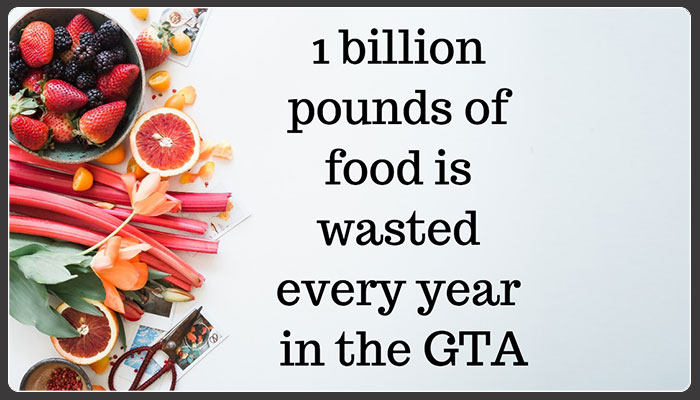
Toronto has a garbage problem. More specifically, it has a ‘throwing out food in the garbage’ kind of problem.
All of us have done it before. We buy food, it doesn’t get eaten, and we throw it out. We do it as people and households. It is done at corporate and locally-owned restaurants. Even grocery stores are forced to toss out food items here and there.
Approximately a billion pounds of food is wasted every year in the GTA. If these items could be re-purposed to feed the hungry and the homeless, there’s no telling the amount of good that this would do.
Much of this food comes from fruits and vegetables that are no longer so ripe and aesthetically pleasing. Many Torontonians throw this food out because it doesn’t look great. These items however could easily be re-purposed to make smoothies, soups, and other meals.
The problem of ugly fruits and vegetables is so extensive that many grocery stores won’t even stock produce that does not look aesthetically pleasing. This results in tons being thrown out. These are crooked eggplants, oddly shaped peppers, and all sorts of unpolished fruits and vegetables that are being let go of every day.
Read more: Why Making the Most from the Food in our Garbage is a Necessity
How an Organic-Only Condo Garbage Chute can Reduce Landfill Waste

A high-rise condo building in Etobicoke recently added an organic-only garage chute, adopting a waste reduction method that some experts are predicting could keep significant amounts of household waste from ending up in Canadian landfills.
The 22-storey condo building that we are discussing in this article is a high-rise at 812 Burnhamthorpe Road. After converting one of its chutes into organics-only, many residents praised the efforts of reducing the waste outputted by buildings such as these every year.
By providing residents with an organics-only chute, it marks an easy way to get rid of the garbage that is normally inputted with all the other waste thrown out. If you can make it more convenient, most will use it.
The City of Toronto has recognized the success of buildings like 812 Burnhamthorpe Road at organics-only garbage developments. There is admittedly more that can be done to get the whole city on the same kick. For example, only 65 percent of single family homes in the GTA recycle their waste. When it comes to Torontonians living in apartments, condos, and co-ops, that number is even lower at 27 percent. The argument made here is that by creating more organics-only chutes, potentially that percentage can be raised significantly among condo dwellers.
Read more: How an Organic-Only Condo Garbage Chute can Reduce Landfill Waste
Ontario to Revamp Organic Waste Collection and Recycling Practices
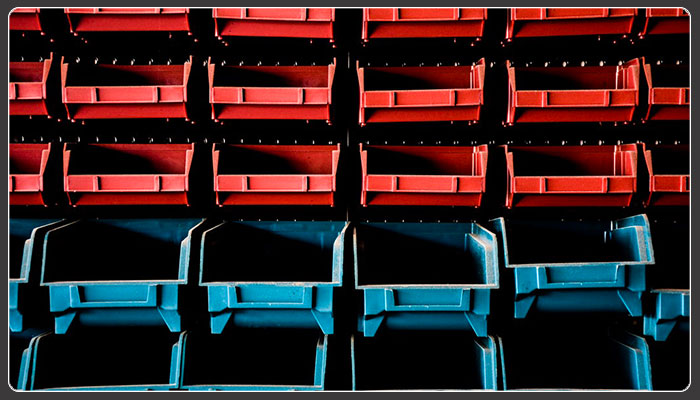
An announcement is expected in the next few months with regards to revamping Ontario recycling and organic waste collection.
Though the details are not yet clear, a disposal ban on food waste is among the initiatives expected to be mentioned. Should a disposal ban on food waste become reality, this could mean mandatory green boxes across the province.
This upcoming announcement should tie up questions surrounding the Waste-Free Ontario Act which was passed in 2016. This legislation transferred responsibility for recycling collection and the expense of this to waste producers, which was passed as a means of reducing Ontario’s financial burden. Meanwhile, municipalities are expected to have the option of how much responsibility they want to take on their own recycling practices.
With regards to the City of Sarnia, currently the city funds up to 50 percent of the area’s recycling program. The City has the option to transfer the program’s responsibility to Stewardship Ontario, a not-for-profit organization representing producers of recycled packaging material.
Read more: Ontario to Revamp Organic Waste Collection and Recycling Practices
Could an Organic Waste Ban be The Answer to Ontario’s Landfill Problem?
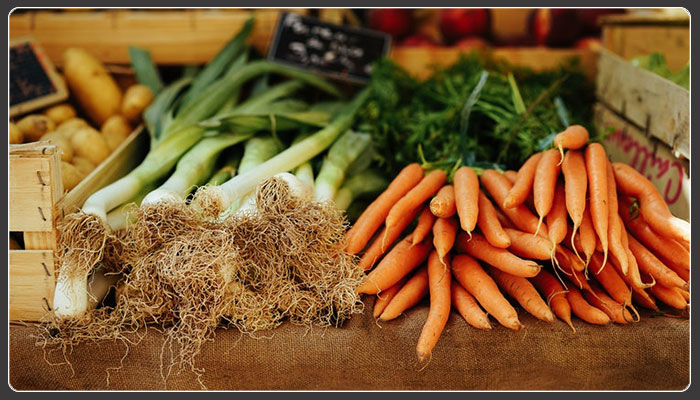
Before the year 2040, Ontario’s landfill could good and well run out of capacity. Reports have proven that each year the province has approximately 12 million tons of waste that is generated, with only about a quarter of that being recycled. If we were to break that amount down, it would equal to more than 850 kilograms of waste per person.
It is clear, that past initiatives have not worked in terms of diverting waste. In 2004 plans were to be made to reduce our waste from 60% through different recycling and compost programs. However, nothing has changed 13 years later and we are still throwing out as much waste now as we did back then.
That is why the Ontario government is now starting to rethink their strategies and are considering as of next year, a ban against organic waste being sent to our landfills.
The good thing is that residential households have been able to reduce their waste by about 50%. Even though most of the bigger municipalities currently have green waste bin programs in place, not all residents are aware on how to use them and therefore a lot of things are still being thrown into them that shouldn’t be. If more people were further educated on this then imagine how much further we can reduce our waste. During recent audits, it was discovered that up to 40% of garbage bin trash should have actually been placed in the green bins instead. Kingston is the only municipality thus far to have the green bin program spread to also condos and apartments, and even then, it is not mandated by law for residents to use them.
Read more: Could an Organic Waste Ban be The Answer to Ontario’s Landfill Problem?
Food Waste - A Canadian Wake Up Call

Trashed and Wasted is usually what we call someone who has a little bit too much to drink. But this time, Trashed and Wasted refers to an event that took place on March 1st at the Wychwood barns. It was a dining experience that was used to create awareness of a serious growing issue, food waste. The event was put on and organized by head chef Brock Sheppard, who’s focus is for everyone to become more conscious of our waste collection habits and the food we are discarding.
What was unique about the event is that the dishes being made were from ingredients that are typically found in discarded food waste. Some of the culinary dishes prepared were the Tom Yum Soup made with fish heads which is a popular classic in Thai cuisine, and a stew made from the skins of green plantains, a favorite among those from Venezuela. A delicious and popular drink choice at the event was a vodka that was made from leftover cheese whey, thanks to the people at Yongehurst Distillery Co. and Stratford’s Monforte Dairy.
It has been reported that an astonishing $31 billion worth of food is being discarded each year in Canada alone. With all of the awareness now that is being raised regarding the overload of garbage dumps, this came as a successful event. With the intent of sparking ideas of how to create food from neglected leftovers, this event left a lot of guests thinking about what they could do to change their habits.
DIY Home Renos: What You Need To Know

If you like getting your hands dirty and find satisfaction in destroying things then home demolition is right up your alley. However, there are a few things you may want to know so that you are not caught off guard with any surprises along the way.
The first thing we should just get out there is that home renovations are never a pretty site at first. It will be downright gross. From everything to stained hardwood and carpet, to rats and creepy crawlers in the attic, you will definitely want to keep a mask on during this process for health purposes.
Secondly, you want to make sure that you have all the necessary equipment to get the job done. Do some research beforehand and find out what kind of tools you will be needing. This way you don’t run into any problems and end up taking trip after trip to the hardware store. You will for sure want to keep a set of the following tools: A chisel, Shop Vac, hammers and crow bars.
Another important reminder you want to give yourself is to order a garbage disposal bin. This will leave you a lot less hassle knowing that you can throw everything in and have someone haul it away afterwards. It prevents you from creating a big mess outside which would then have to be cleaned up when all is said and done. Do some research and compare companies and the different services they may offer. Some companies will do multiple dumps for you so that you may throw out as much junk as you’d like. You may also want to keep a few organized piles for stuff to be donated, sold or disposed of.


